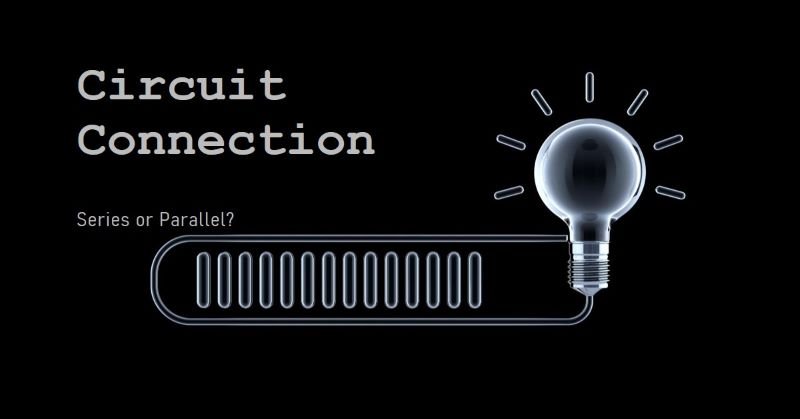What Is LED PCB?
Introduction
A LED PCB, or Light Emitting Diode Printed Circuit Board, is a type of circuit board specifically designed for LED lighting applications. It is a crucial component that allows LEDs to function properly and efficiently. In this article, we will explore what an LED PCB is and its types:
What is LED PCB?
LED PCB stands for Light Emitting Diode Printed Circuit Board. It is a specialized type of circuit board that is designed to support and connect LEDs (Light Emitting Diodes) in an efficient and reliable manner. LED PCBs are used in a wide range of applications, from lighting fixtures and displays to automotive and electronic devices,
How does a LED PCB work?
LED PCBs are designed to provide electrical connections and mechanical support to the LEDs. They have a specific layout that allows for the proper placement and connection of the LEDs, as well as other components such as resistors and capacitors.
The main function of a LED PCB is to provide a stable and reliable power supply to the LEDs. It ensures that the LEDs receive the correct voltage and current to operate at their optimal performance. Additionally, the PCB helps to dissipate heat generated by the LEDs, preventing overheating and prolonging their lifespan.
Benefits of using a LED PCB
There are several benefits to using a LED PCB in LED lighting applications:
- Improved thermal management : A LED PCB is designed with heat dissipation in mind. It helps to dissipate heat generated by the LEDs, preventing overheating and ensuring the longevity of the LEDs. This is particularly important for high-power LEDs that generate a significant amount of heat.
- Enhanced reliability : LED PCBs are designed to provide a stable and reliable power supply to the LEDs. They ensure that the LEDs receive the correct voltage and current, preventing any fluctuations that could damage the LEDs or affect their performance. This results in improved reliability and longevity of the LED lighting system.
- Flexibility in design : LED PCBs offer flexibility in design, allowing for the placement of LEDs in various configurations and patterns. This enables the creation of unique and innovative lighting designs that can be tailored to specific applications or requirements.
- Easy installation and maintenance : LED PCBs are designed for easy installation and maintenance. They can be easily mounted onto a surface or within a lighting fixture, and the LEDs can be easily replaced if needed. This makes LED PCBs a convenient choice for both residential and commercial lighting applications.
Applications of LED PCBs
LED PCBs are widely used in various lighting applications, including:
1. Residential lighting : LED PCBs are commonly used in residential lighting, such as ceiling lights, wall sconces, and under-cabinet lights. They offer energy efficiency, long lifespan, and the ability to create different lighting effects.
2. Commercial lighting : In commercial settings, LED PCBs are used in applications such as office lighting, retail store lighting, and outdoor signage. They provide energy savings, improved visibility, and the flexibility to create dynamic lighting displays.
3. Automotive lighting : LED PCBs are also used in automotive lighting, including headlights, taillights, and interior lighting. They offer improved visibility, energy efficiency, and longer lifespan compared to traditional lighting technologies.
4. Industrial lighting : LED PCBs are utilized in industrial lighting applications, such as warehouse lighting, factory lighting, and street lighting. They provide energy savings, enhanced visibility, and durability in harsh environments.
Types of LED PCB
Here are some of common types of LED PCB:
Single-layer LED PCBs
Single-layer LED PCBs are the simplest and most basic type of LED PCB. As the name suggests, these PCBs consist of a single layer of conductive material, usually copper, laminated onto a non-conductive substrate, such as fiberglass or FR-4. Single-layer LED PCBs are commonly used in low-cost LED lights and simple electronic devices.
One of the main advantages of single-layer LED PCBs is their simplicity and low cost. They are relatively easy to manufacture and require fewer materials compared to multi-layer PCBs. However, single-layer LED PCBs have certain limitations, such as limited routing options and lower circuit density.
Double-layer LED PCBs
Double-layer LED PCBs are more complex than single-layer PCBs as they consist of two layers of conductive material separated by an insulating layer. The top layer, also known as the component layer, is used for mounting the electronic components, while the bottom layer, known as the copper layer, is used for routing the electrical connections.
Double-layer LED PCBs offer several advantages over single-layer PCBs. They provide more routing options, allowing for more complex circuit designs. The additional layer also increases the circuit density, enabling the integration of more components into a smaller space. Double-layer LED PCBs are commonly used in a wide range of LED lighting applications, from residential lighting to commercial and industrial lighting.
Multi-layer LED PCBs
Multi-layer LED PCBs are the most advanced and complex type of LED PCBs. They consist of multiple layers of conductive material, separated by insulating layers, and are capable of accommodating a large number of electronic components and complex circuit designs.
Multi-layer LED PCBs offer several advantages over single-layer and double-layer PCBs. They provide even more routing options and significantly higher circuit density, allowing for the integration of complex circuits and advanced functionalities. Multi-layer LED PCBs are commonly used in high-end LED lighting products, such as automotive lighting, high-power LED modules, and LED displays.
How to Make an LED PCB Board
Materials Needed
Before we dive into the steps, let’s gather the materials you’ll need for this project:
- LEDs
- PCB (Printed Circuit Board)
- Soldering Iron
- Solder
- Flux
- Wire cutters
- Wire strippers
- Drill
- Drill bits
- Masking tape
- Marker pen
Step-by-Step Guide for making LED PCB Board
Step 1: Design your LED circuit
Start by designing your LED circuit on a piece of paper or using a computer-aided design (CAD) software. Determine the number of LEDs you want to include, their placement, and the connections between them. This will serve as your blueprint for creating the PCB.
Step 2: Transfer the design to the PCB
Take your PCB and use a marker pen to trace the circuit design onto it. Make sure to mark the locations for the LEDs and any other components you plan to include. This will help you with the placement during the next steps.
Step 3: Drill holes for the LEDs
Using a drill and the appropriate drill bit size, carefully drill holes at the marked locations for the LEDs. Take your time and ensure the holes are the right size to fit the LEDs securely.
Step 4: Solder the components
Now it’s time to solder the components onto the PCB. Start by inserting the LEDs into the drilled holes, making sure they fit snugly. Then, using wire cutters and wire strippers, prepare the wires for each LED and solder them to the appropriate spots on the PCB. Be careful to follow the circuit design and make secure connections.
Step 5: Test the circuit
Before proceeding further, it’s important to test your circuit to ensure everything is working correctly. Connect the positive and negative terminals of a power source to the appropriate points on your PCB. If the LEDs light up as expected, congratulations! Your circuit is functioning properly.
Step 6: Finalize the PCB
Once you’ve confirmed that your circuit is working, it’s time to finalize the PCB. Trim any excess wire, double-check all the solder connections, and make sure everything is secure. You can also add any additional components or features at this stage.
Step 7: Finishing touches
Now that your LED PCB board is complete, you can add some finishing touches. Use masking tape to cover any exposed wires or solder joints for a neater appearance. You can also label the different components or sections of your circuit for future reference.
Conclusion
LED PCBs plays an important role in the functioning and performance of LED lighting systems. They provide electrical connections, mechanical support, and thermal management for the LEDs, ensuring their reliability and longevity. With their numerous benefits and wide range of applications, LED PCBs are an essential component in the world of LED lighting.








